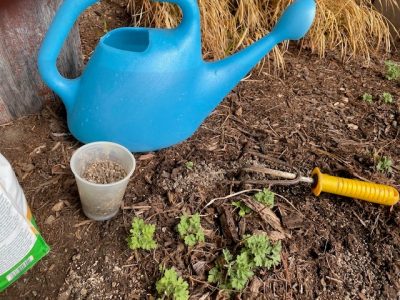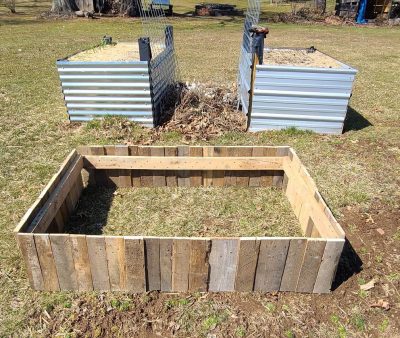By Dawn Pettinelli, UConn Home & Garden Education Center
Plants need nutrients to grow and develop just like we need vitamins and minerals. They get most of their nutrients dissolved in the water they take up with their roots. When we add fertilizer to the soil around our garden plants, we are adding vital plant nutrients.
Native Connecticut soils are typically low in pH and low in nutrients. Our native plants have adapted to our native soils but most of our garden plants are not from around here. Zinnias and tomatoes are from South America, bluegrass lawns and lilacs hail from Europe and rhododendrons from Asia. Our native soils may not supply the nutrients they need so it is up to us to do so.
Of course, the best way to know which nutrients and how much to add is with a soil test. April is a very busy month at the UConn Soil Nutrient Analysis Lab (www.soiltesting.cahnr.uconn.edu) but there is still time to get your soil tested before planting.
Without soil test recommendations, always follow the directions on the fertilizer package. Applying too much can injure your plants plus excessive nitrogen and phosphorus can wind up in our waterways. Before fertilizing, calculate out the square footage of your garden or lawn. You don’t need to measure exactly; you can measure a pace and then walk down the length and across the width of your gardens to get a rough estimate of area. For odd-shaped beds or lawns, break them down into more square, oval or rectangular areas and add them up.
All fertilizers come with 3 numbers on the package denoting the percent, on a dry weight basis, of nitrogen, phosphorus and potassium. Nitogen promotes green, leafy growth, phosphorus encourages fruits and roots, and potassium is for all round health and tolerance to stresses like drought, cold and disease. So, fertilizers with a higher nitrogen number would be most appropriate for turf grasses, trees and shrubs, while ones higher in phosphorus are generally used in vegetable and flower gardens.

Whether you select a synthetic or natural organic fertilizer is a matter of personal choice. Both are beneficial to plants. For annual plantings, whether vegetable or flowers, it would be ideal to mix the fertilizer into the top 6 inches of soil. That’s where most of the roots will be so it makes sense that the nutrients they need are there too. Put down the fertilizer, as well as any limestone or other amendments shortly before planting. Long season annuals, like tomatoes, pumpkins and marigolds would appreciate a second application of fertilizer, referred to as side dressing, about 2 months after the first one.
As you are cleaning up your perennial beds and see the new shoots popping through the soil, add some fertilizer around plants and carefully scratch it in. Do the same for bulbs. It is harder to fertilize if the beds are heavily mulched. Not much fertilizer spread on top of mulch will make it to the plant roots. Rake or pull away the mulch, sprinkle some fertilizer directly to the soil around your plants and replace the mulch.
For trees and shrubs, fertilizer should be spread under the whole canopy as a healthy root system will grow at least as wide as the branches and perhaps even more so. Do your best to remove the mulch before fertilizing. Typically trees and shrubs are fertilized once a year in the spring. Once they have reached their mature size, often the fertilizer is cut down to half rate as woody plants can recycle many of the nutrients they need.
Lawns can be fertilized now but pay attention to the moisture level of the soil. With all the rain that we have been experiencing, the soil is pretty soggy in spots. Stay off wet soils as they will become compacted. Most lawns do well with just a spring and fall application of fertilizer. If the clippings are left down, they supply nutrients plus add organic matter to the soil. Be sure to set your spreader on the proper setting.
If you have questions about fertilizing or if you have any other gardening questions, contact the UConn Home & Garden Education at (877) 486-6271 or www.homegarden.cahnr,uconn.edu or your local Cooperative Extension Center.

